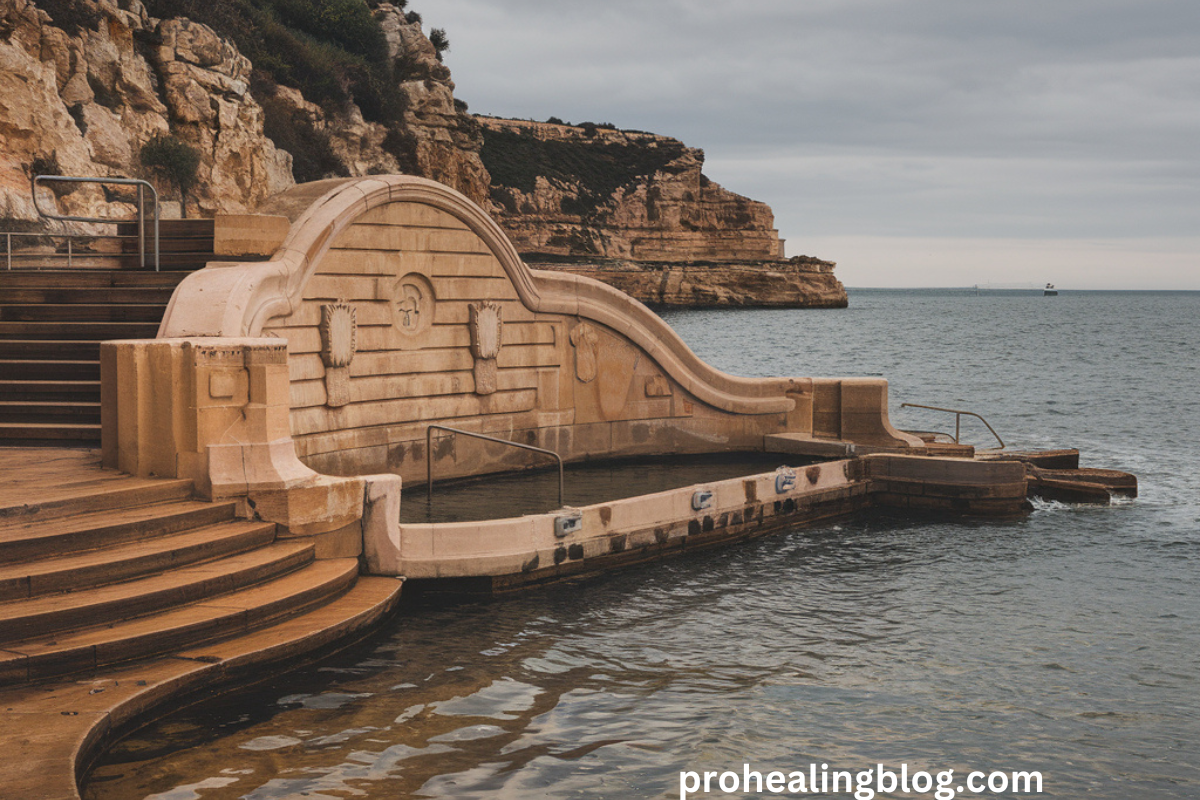Origins of The Roman Tidal Baths in Malta Sea Level
During the late 19th and early 20th centuries, Malta experienced a surge in coastal development. The Victorian era brought with it a fascination for sea bathing, leading to the creation of numerous tidal baths along Malta’s eastern coast. These baths were meticulously carved into the soft Globigerina limestone, a material abundant in the region and ideal for such endeavors.
The primary purpose of these tidal baths was recreational. They provided a safe and controlled environment for sea bathing, especially for women and children. The design typically featured shallow pools with steps leading down to the water, allowing bathers to enjoy the sea without venturing into open waters.
See also: What Plants Can Be Used to Make Herbs and Spices
Construction Techniques
The construction of these baths showcased the ingenuity of Victorian engineering. In fact, artisans utilized simple tools to carve out pools directly from the limestone bedrock. Because the soft nature of Globigerina limestone made it relatively easy to shape, it was also durable enough to withstand the erosive forces of the sea. Thus, the material proved to be both practical and resilient for such an ambitious project.
Typically, the baths were about 1.3 meters deep, allowing bathers to stand comfortably. Some designs included protective barriers to shield users from strong waves, while others had channels that allowed seawater to flow in and out with the tides, ensuring a constant supply of fresh water.
Debunking the Roman Myth
A common misconception is that these tidal baths date back to Roman times. This belief has been perpetuated by social media posts and even some local legends. However, historical records and expert analyses confirm that these structures are products of the Victorian era. Roman archaeologist Professor Anthony Bonanno and oceanographer Dr. Anthony Galea have both clarified the timeline of their construction, placing them firmly in the late 19th to early 20th centuries.
Sea Level Observations
The enduring presence of these tidal baths at their original sea levels has led some to question the narrative of rising sea levels due to climate change. Photos circulating online often showcase these baths seemingly unaffected by time, suggesting that sea levels have remained constant. However, such observations can be misleading.
Sea levels are influenced by various factors, including tides, atmospheric pressure, and geological activity. A single photograph or observation at a specific moment doesn’t capture the complexities of sea level changes over time. Dr. Adam Gauci, a geoscience lecturer, emphasizes the need for long-term data to assess sea level trends accurately.
See also: Plastic Surgeons and Ozempic Face: Causes, Treatments, and Expert Solutions
Scientific Evidence of Sea Level Rise
Comprehensive studies have documented a consistent rise in global sea levels over the past century. Data from the EU climate service Copernicus indicates an average increase of 2.5 millimeters per year between 1993 and 2023. Cumulatively, global sea levels have risen by approximately 21 to 24 centimeters since 1880.
It’s essential to recognize that local sea level changes can deviate from global trends due to regional factors. In Malta’s case, the relative stability of the tidal baths doesn’t negate the broader evidence of rising sea levels. Instead, it highlights the importance of localized studies to understand regional impacts about roman tidal baths in malta sea level.
The Role of Geological Stability
Malta’s geological stability has contributed to the preservation of these tidal baths. Unlike regions prone to significant tectonic activity or subsidence, Malta’s coastlines have remained relatively unchanged, allowing these structures to endure. However, this stability doesn’t imply immunity to future sea level rise. Ongoing monitoring and research are crucial to anticipate and mitigate potential impacts.
Cultural and Historical Significance
Beyond their structural resilience, the Victorian tidal baths hold cultural and historical value. They serve as reminders of a bygone era when sea bathing became a popular leisure activity. Preserving these sites offers insights into the social and recreational practices of the past, enriching Malta’s rich historical tapestry.
Conclusion About Roman Tidal Baths in Malta Sea Level
Malta’s so-called “Roman tidal baths” are, in fact, relics of the Victorian era, reflecting the island’s historical engagement with the sea. While their enduring presence at current sea levels may raise questions, it’s essential to approach such observations with a nuanced understanding of geological and environmental factors. Comprehensive scientific data underscores the reality of global sea level rise, reminding us of the importance of informed perspectives in discussions about climate change.






